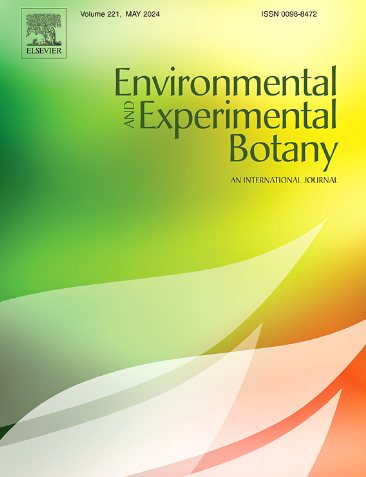Light-regulated interactions between Phaeobacter sp. and Ulva ohnoi (Chlorophyta): Effects on microbiome dynamics, metabolome composition, and tropodithietic acid production
IF 4.5
2区 生物学
Q2 ENVIRONMENTAL SCIENCES
引用次数: 0
Abstract
Ulva spp. are economically important macroalgae with various industrial applications, including as biofiltration agents for fish effluents in integrated multi-trophic aquaculture recirculating systems (IMTA-RAS). Recent works have proposed inoculating U. ohnoi with the probiotic bacterium Phaeobacter sp. strain 4UAC3 to tackle fish pathogens such as Vibrio spp. in IMTA-RAS. However, the disappearance of Phaeobacter sp. 4UAC3 upon inoculation of U. ohnoi under a regular photoperiod presents significant challenges. This study aimed to investigate how different light regimes impact the relationship between the U. ohnoi holobiont and Phaeobacter sp., focusing on how the colonization of Phaeobacter sp. strain 4UAC3 on U. ohnoi surfaces affects the alga's microbiome and metabolome dynamics. We also sought to validate the presence of tropodithietic acid (TDA), which can act as a probiotic. The study revealed the critical role of light in shaping microbial interactions between Phaeobacter sp. and U. ohnoi: The light regime significantly altered the microbial community structure, metabolite production, and physiological responses of both the bacterium and the alga. Phaeobacter sp. strain 4UAC3 thrived in darkness, modulating the microbiome and the exo- and endo-metabolomes of U. ohnoi. TDA was only identified under dark conditions and released into the algal chemosphere, while Phaeobacter antimicrobial properties were most pronounced in close association with the alga. These findings underline the importance of environmental factors, such as light regime, in driving microbial and molecular dynamics in marine holobionts. In addition, our results have direct implications for the application of U. ohnoi and Phaeobacter sp. in aquaculture, providing valuable insights for future research and practical applications in the field.
光调节下辉杆菌和绿藻之间的相互作用:对微生物组动力学、代谢组组成和滋养二酸生产的影响
藻是一种具有重要经济意义的大型藻类,具有多种工业用途,包括在综合多营养水产养殖循环系统(IMTA-RAS)中作为鱼类废水的生物过滤剂。最近的研究提出用益生菌Phaeobacter sp. strain 4UAC3接种U. ohnoi来对付IMTA-RAS中弧菌等鱼类病原体。然而,在常规的光周期下,接种欧氏弧菌后,辉杆菌sp. 4UAC3的消失提出了重大挑战。本研究旨在探讨不同的光照条件如何影响欧氏菌与辉杆菌之间的关系,重点研究了辉杆菌菌株4UAC3在欧氏菌表面的定植如何影响欧氏菌的微生物组和代谢组动力学。我们还试图验证tropo二甲酸(TDA)的存在,它可以作为益生菌。该研究揭示了光在形成Phaeobacter sp.和U. ohnoi之间的微生物相互作用中的关键作用:光照制度显著改变了细菌和藻类的微生物群落结构、代谢物产生和生理反应。细菌4UAC3在黑暗环境中繁殖,调节欧氏杆菌的微生物组和外代谢组和内代谢组。TDA仅在黑暗条件下被鉴定并释放到藻类的化学环境中,而Phaeobacter的抗菌特性与藻类密切相关。这些发现强调了环境因素的重要性,如光照条件,在驱动海洋全息生物的微生物和分子动力学。此外,我们的研究结果对欧氏梭菌和辉obacter sp.在水产养殖中的应用具有直接意义,为该领域未来的研究和实际应用提供了有价值的见解。
本文章由计算机程序翻译,如有差异,请以英文原文为准。
求助全文
约1分钟内获得全文
求助全文
来源期刊

Environmental and Experimental Botany
环境科学-环境科学
CiteScore
9.30
自引率
5.30%
发文量
342
审稿时长
26 days
期刊介绍:
Environmental and Experimental Botany (EEB) publishes research papers on the physical, chemical, biological, molecular mechanisms and processes involved in the responses of plants to their environment.
In addition to research papers, the journal includes review articles. Submission is in agreement with the Editors-in-Chief.
The Journal also publishes special issues which are built by invited guest editors and are related to the main themes of EEB.
The areas covered by the Journal include:
(1) Responses of plants to heavy metals and pollutants
(2) Plant/water interactions (salinity, drought, flooding)
(3) Responses of plants to radiations ranging from UV-B to infrared
(4) Plant/atmosphere relations (ozone, CO2 , temperature)
(5) Global change impacts on plant ecophysiology
(6) Biotic interactions involving environmental factors.
 求助内容:
求助内容: 应助结果提醒方式:
应助结果提醒方式:


